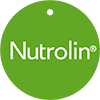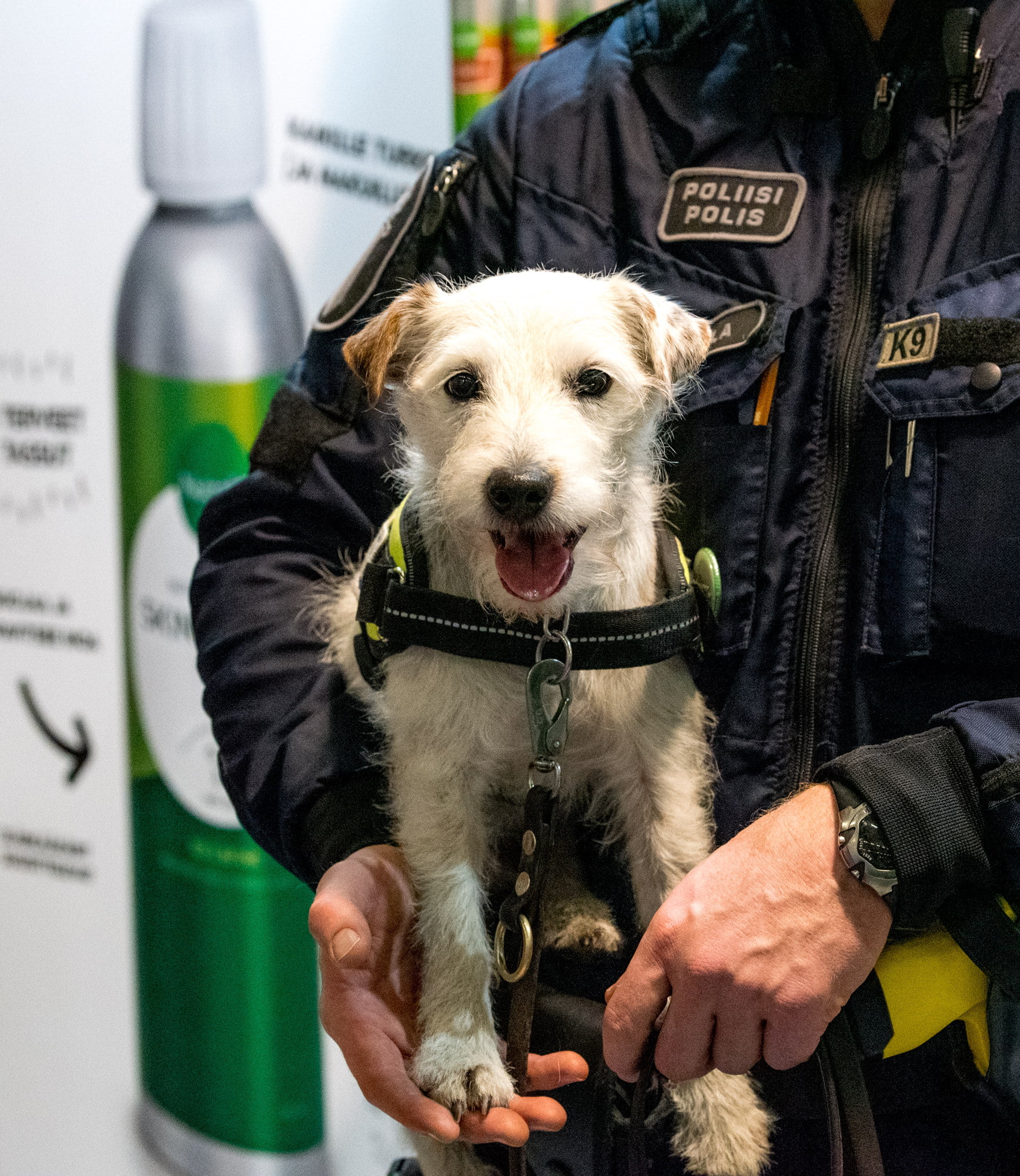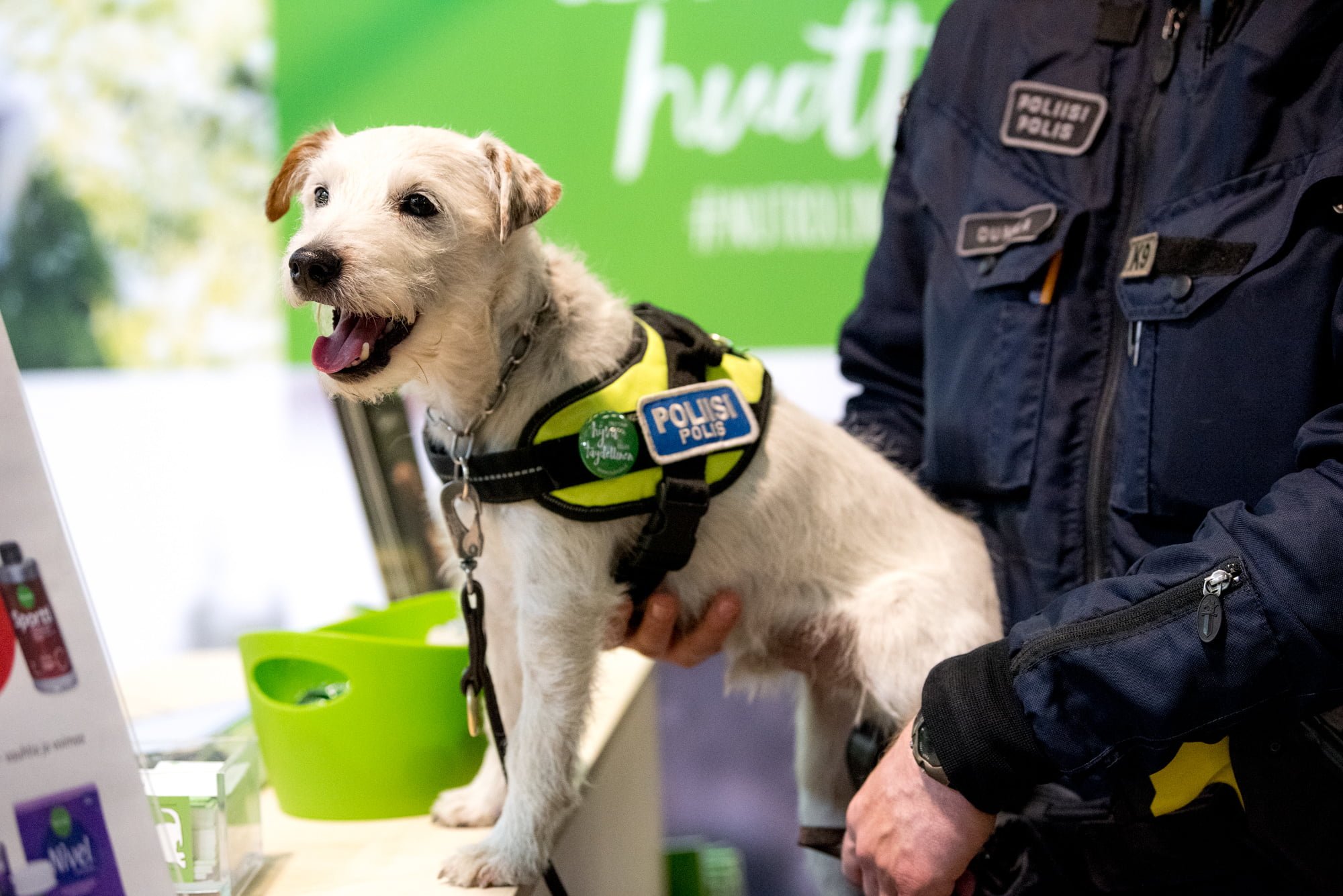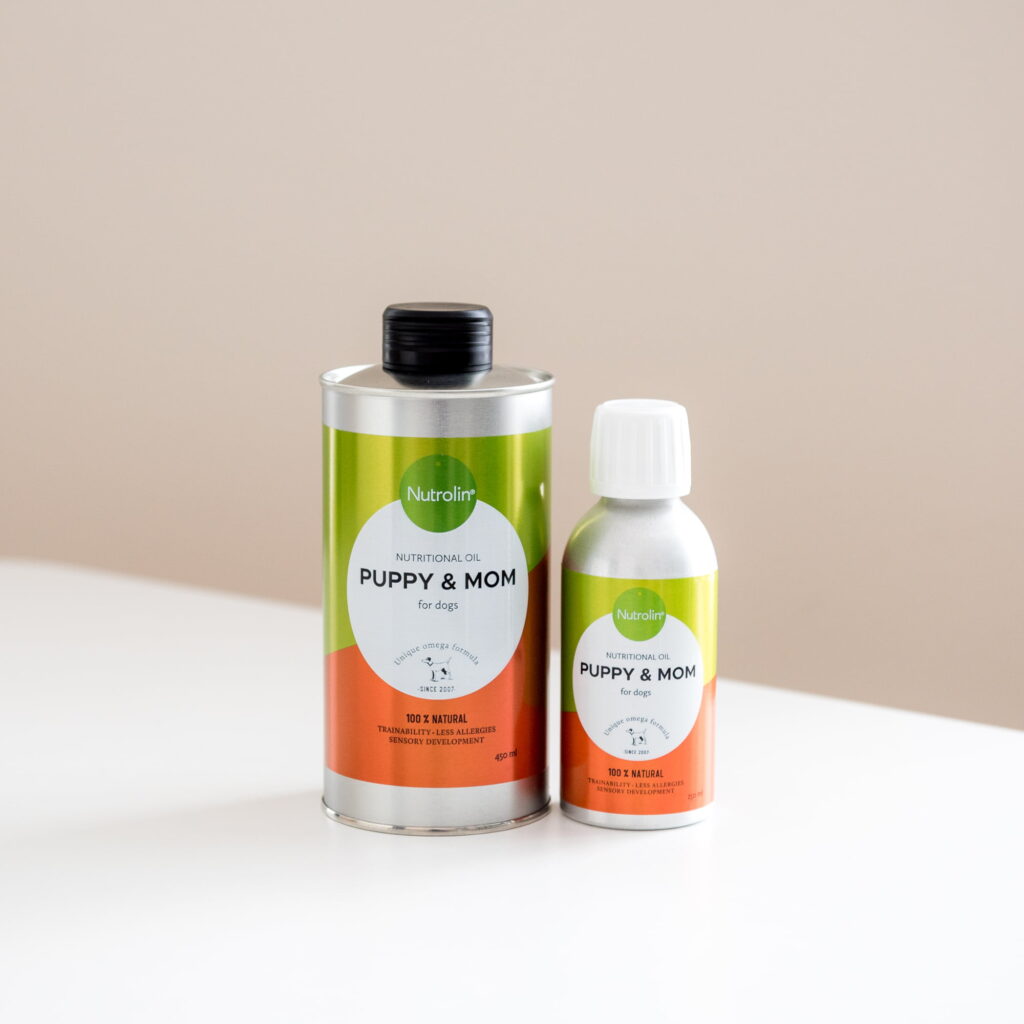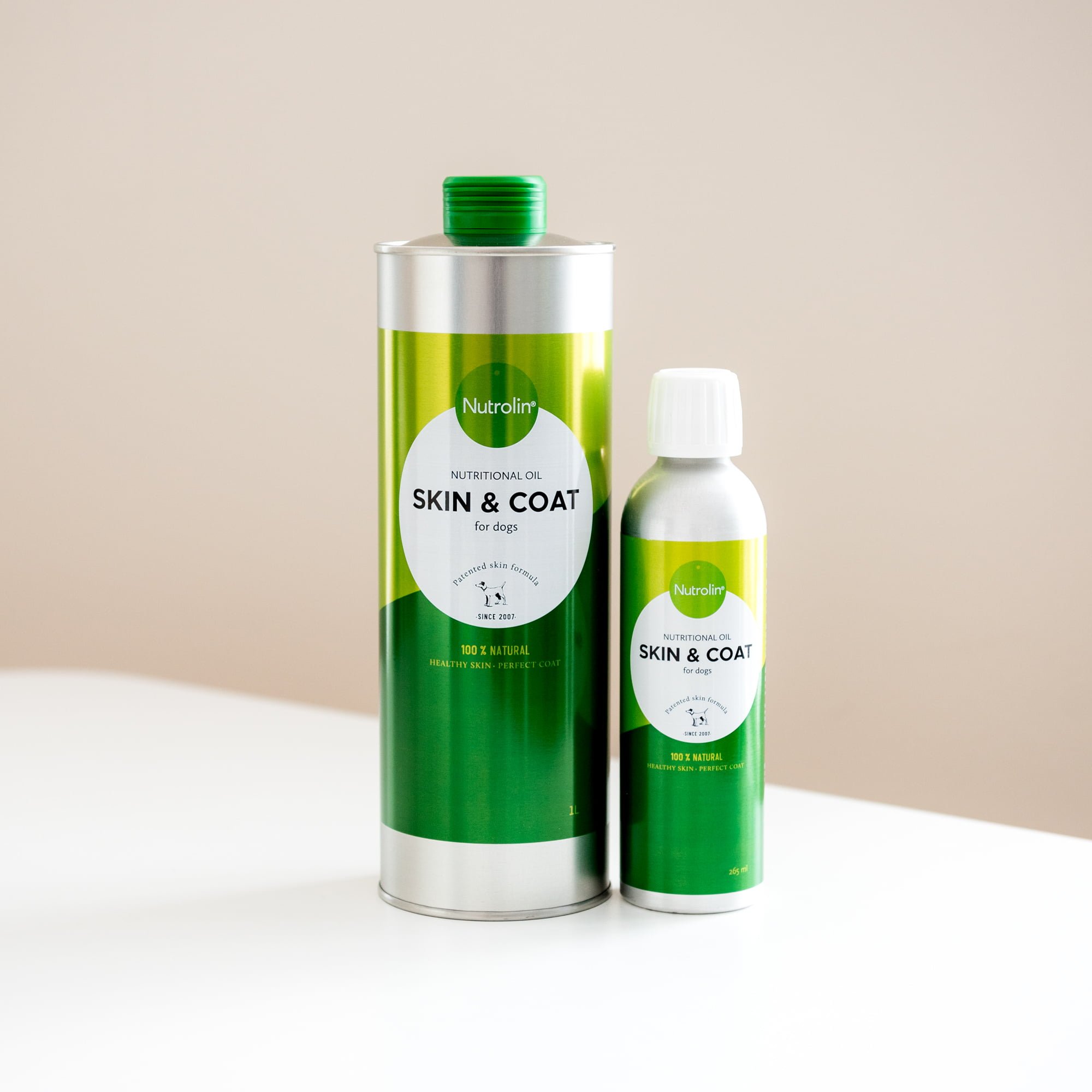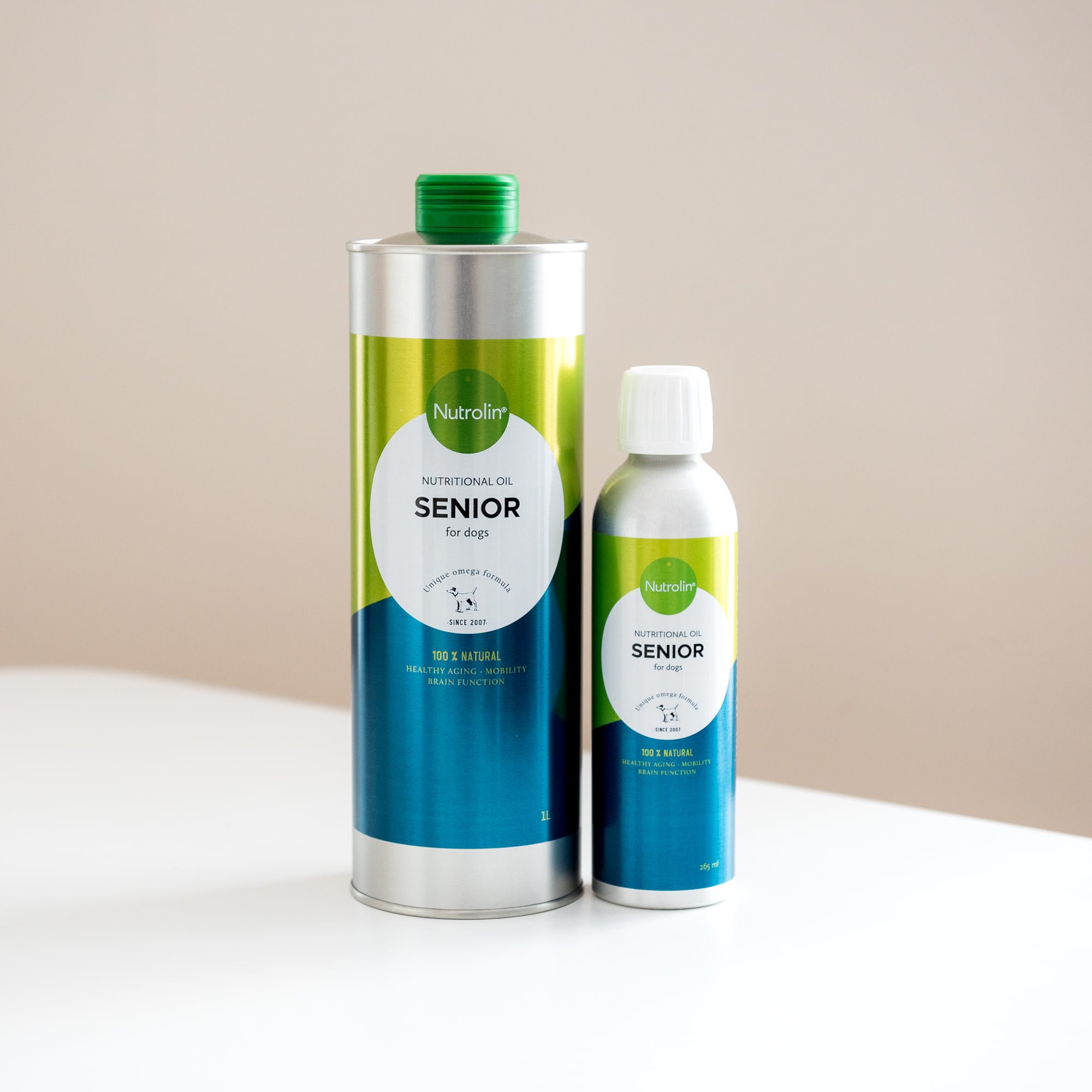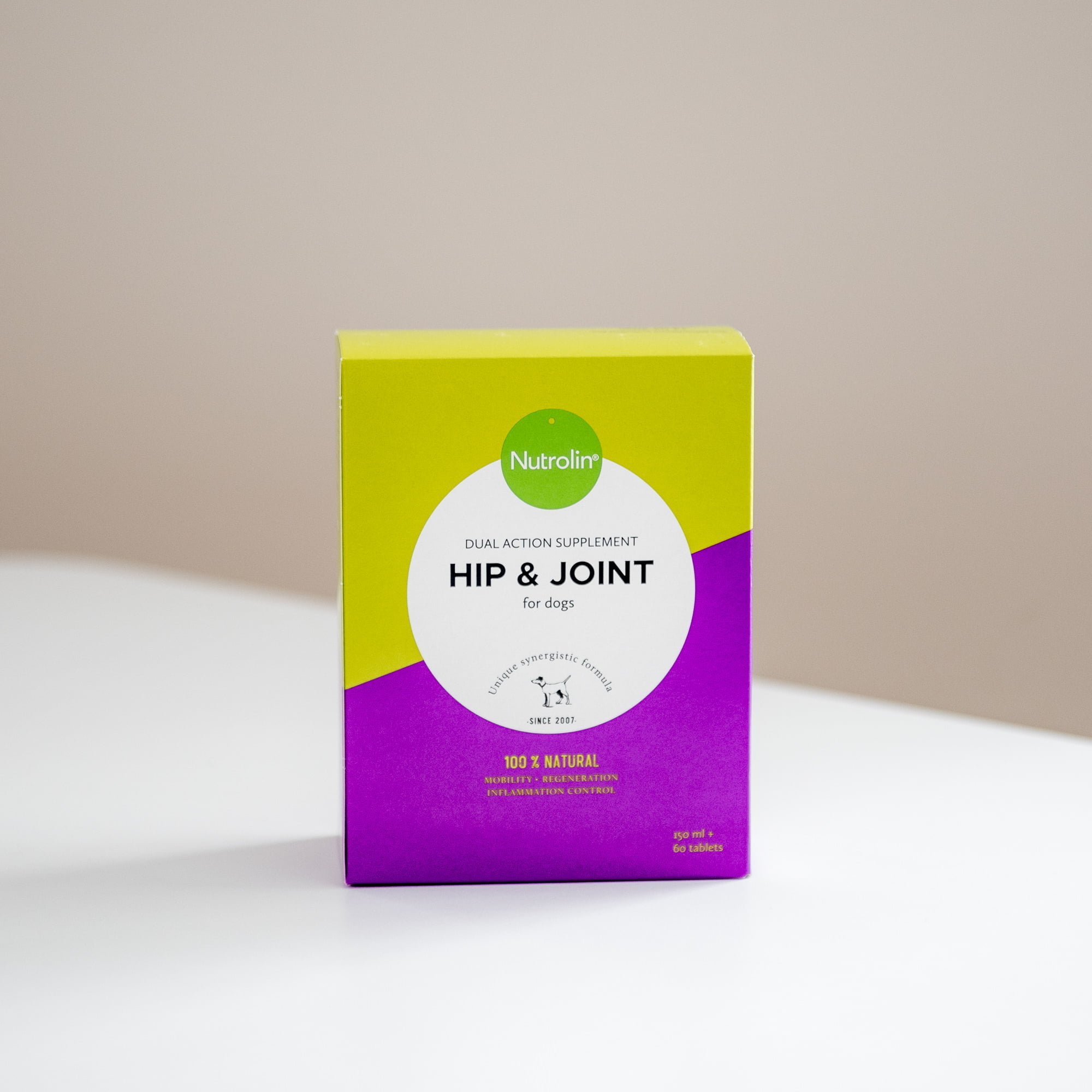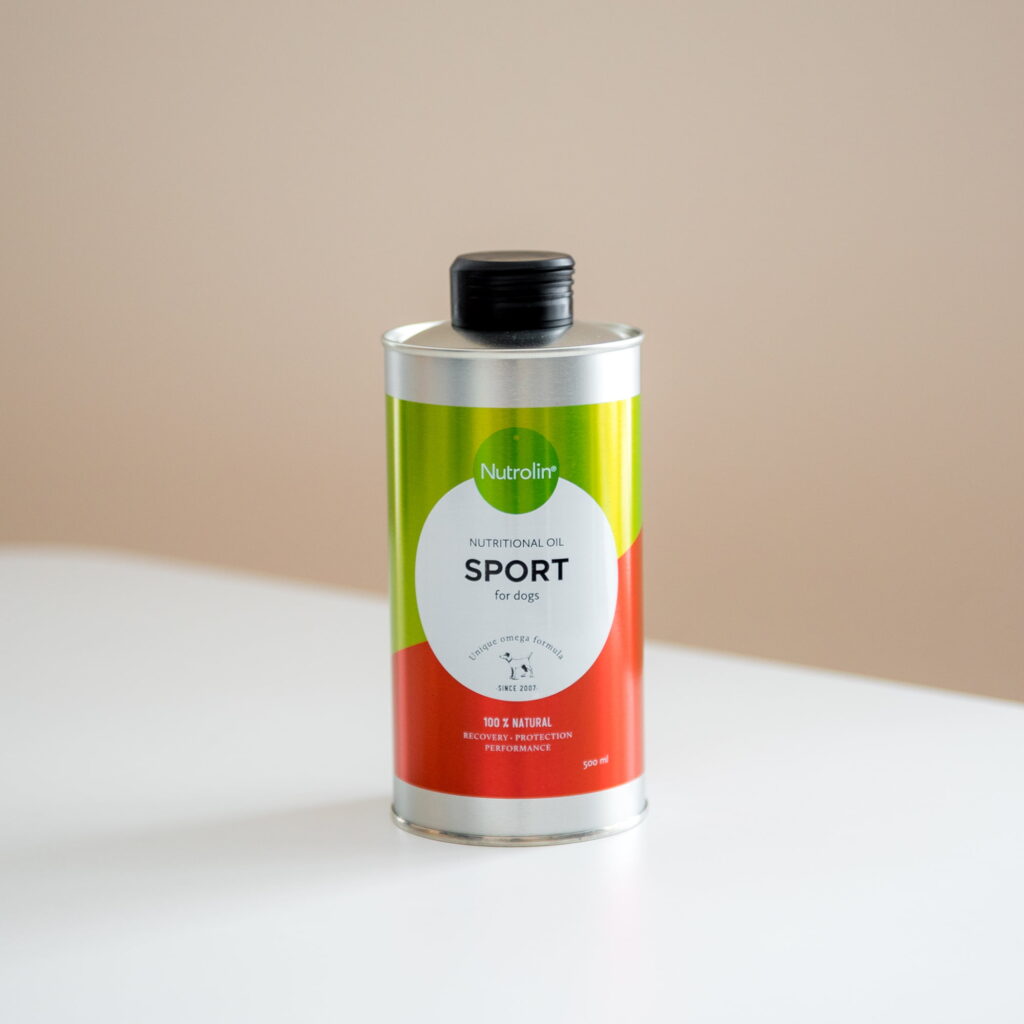Dog,Nutrolin® PUPPY & MOM
Boost your working dog with the right fatty acids – DHA for the puppy’s brain
If you want your puppy to be more trainable, the omega-3 fatty acid docosahexaenoic acid (DHA), is an essential component of your dog’s diet. Puppies fed higher levels of DHA are easier to train than puppies with low levels of DHA. Omega-3 DHA is by far the most important fatty acid supporting the development of the puppy. Sufficient supply of DHA is required for optimal development of the brain function and visual acuity (Heinemann et al. 2005).
DHA may also be needed for optimal development of the sense of smell. Studies in experimental animals suggest that lack of omega-3 DHA will interfere with the olfactory-based learning (Greiner et al. 2001). In an optimal case a puppy gets its DHA from its mother. First during the pregnancy from the mother’s body reserves and then from the mother’s milk.
Sufficient supply of DHA ensures that the dog’s brain function, eyesight and sense of smell develop optimally. This will improve the trainability of the puppy (Hoffmann et al. 2002; Zicker et al. 2012). In working dogs sufficient supply of omega-3 DHA is important to allow the puppy to raise to its full genetic potential.
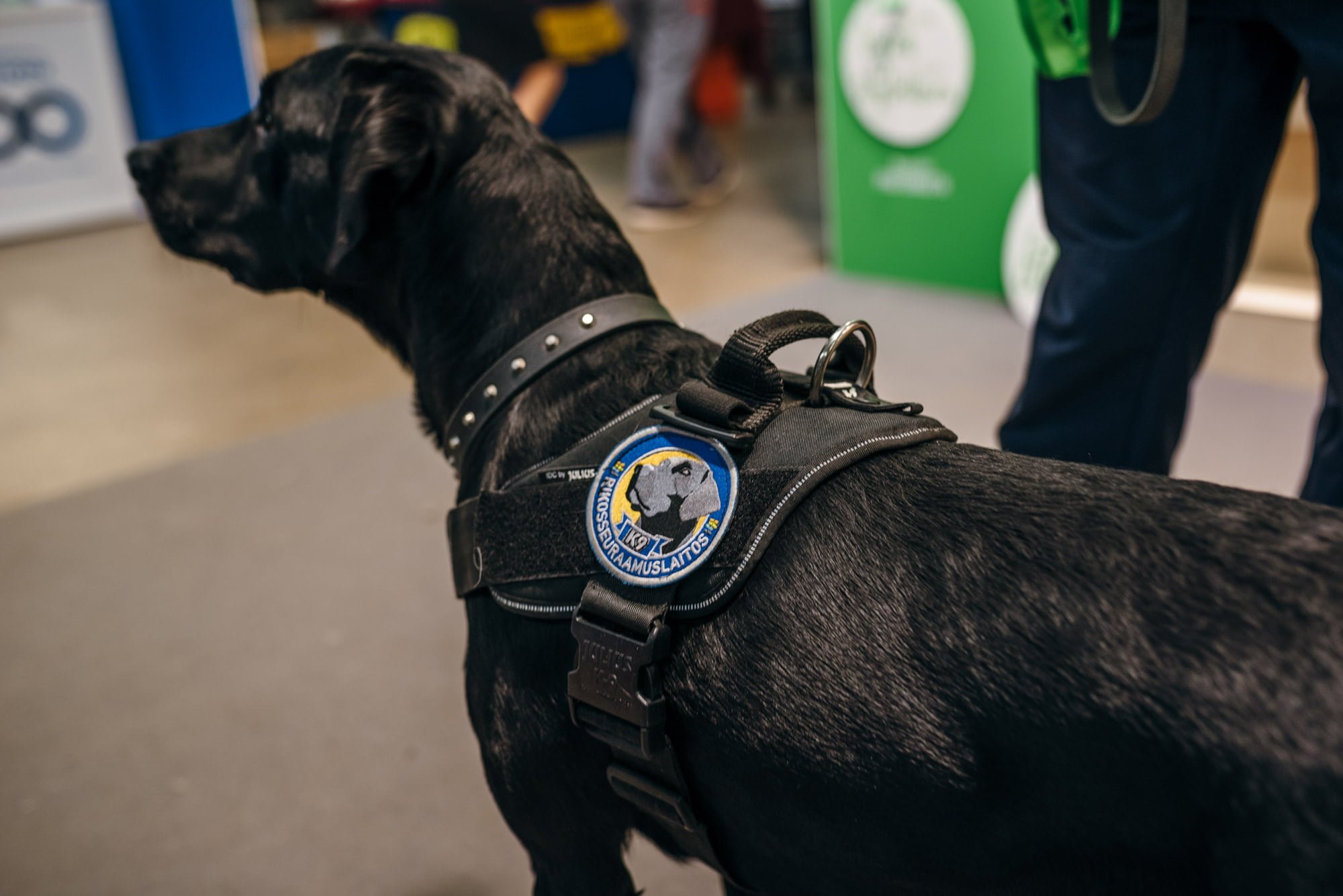
Fish oil, rich in omega-3 fatty acids, is often added to dry dog food intended for use in feeding pregnant dogs and puppies. Fish oil omega-3 fatty acids are highly sensitive to oxidation and it has been observed that dry dog food becomes easily oxidized (Ma 2016). Dog food with oxidized oil has been shown to impair the growth and development of puppies (Turek et al. 2003). Therefore, it may be advisable to supply the DHA needs of the puppy by giving his mom a high quality liquid nutritional oil during pregnancy. If the mother’s diet has not been sufficient in omega-3 fatty acids, DHA-rich oil can be given to the puppy from weaning to up to 12 moths of age.
A LONGER AND HEALTHIER CAREER FOR YOU WORKING DOG
Do you find the facts about fat and fatty acids confusing? It may help to think of them as vitamin-like nutrients in the sense that, like vitamins, there are many different fatty acids with many different biological roles.
Photos: Jenni Liukkonen & German shepherd puppy Nani Härkönen

 English
English Deutsch
Deutsch